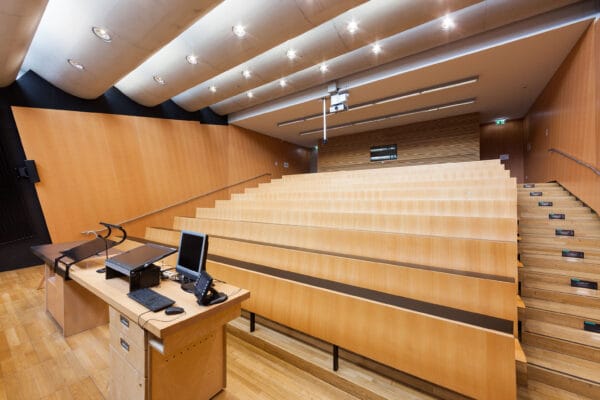
NAME:
SOWI - HS 2
BUILDING:
SOWI
FLOOR:
0
TYPE:
Lecture Hall
CAPACITY:
80
ACCESS:
Only Participants
EQUIPMENT:
Beamer, PC, WLAN (Eduroam), Overhead, Flipchart, Blackboard, Sound System, Handicapped Accessible, Light Installation
Glaciers across the Andes are presently losing mass, with projections showing this is set to continue into the future. But the degree of glacier mass loss into the future still remains uncertain. Mass loss is thought to be partly associated with a decrease in snowfall at higher elevations in response to a warming climate. Understanding this potential reduction in snowfall at present, and into the future, is therefore important as it will affect the stability of these glaciers, and can enable more robust estimates of future glacier mass changes. However, the ability of the modelling studies to fully understand this change is restricted by the limited snowfall measurements that could be used to calibrate predictive models, as well as the insufficient model representation of changing climate drivers of mass loss across this region.
Here, as part of the Deplete and Retreat: The Future of Andean Water Towers project, we investigate the evolution of the snowpack and glacier mass balance across glaciers in the Cordillera Vilcanota in the tropical Andes. We aim to address this by using COSIPY, a coupled snowpack and ice surface energy mass balance model to investigate the evolution of the snowpack and glacier mass balance across this region in a series of intervals from 2000 to 2150 CE. The model was run at 100 m horizontal resolution and forced by results from the convection-permitting (4 km resolution) regional climate model WRF (Weather Research Forecasting, version 4.6) simulations. The COSIPY runs will be tested against observations of snowline extent and thickness from remote sensing data and automated weather stations respectively, from 2000-2024 to ensure the seasonal variations in the snowpack are captured. The projections into the future will be of vital importance to understand future hydrological and glaciological changes, and will be used to predict changes in snow cover into the future.

We and use cookies and other tracking technologies to improve your experience on our website. We may store and/or access information on a device and process personal data, such as your IP address and browsing data, for personalised advertising and content, advertising and content measurement, audience research and services development. Additionally, we may utilize precise geolocation data and identification through device scanning.
Please note that your consent will be valid across all our subdomains. You can change or withdraw your consent at any time by clicking the “Consent Preferences” button at the bottom of your screen. We respect your choices and are committed to providing you with a transparent and secure browsing experience.